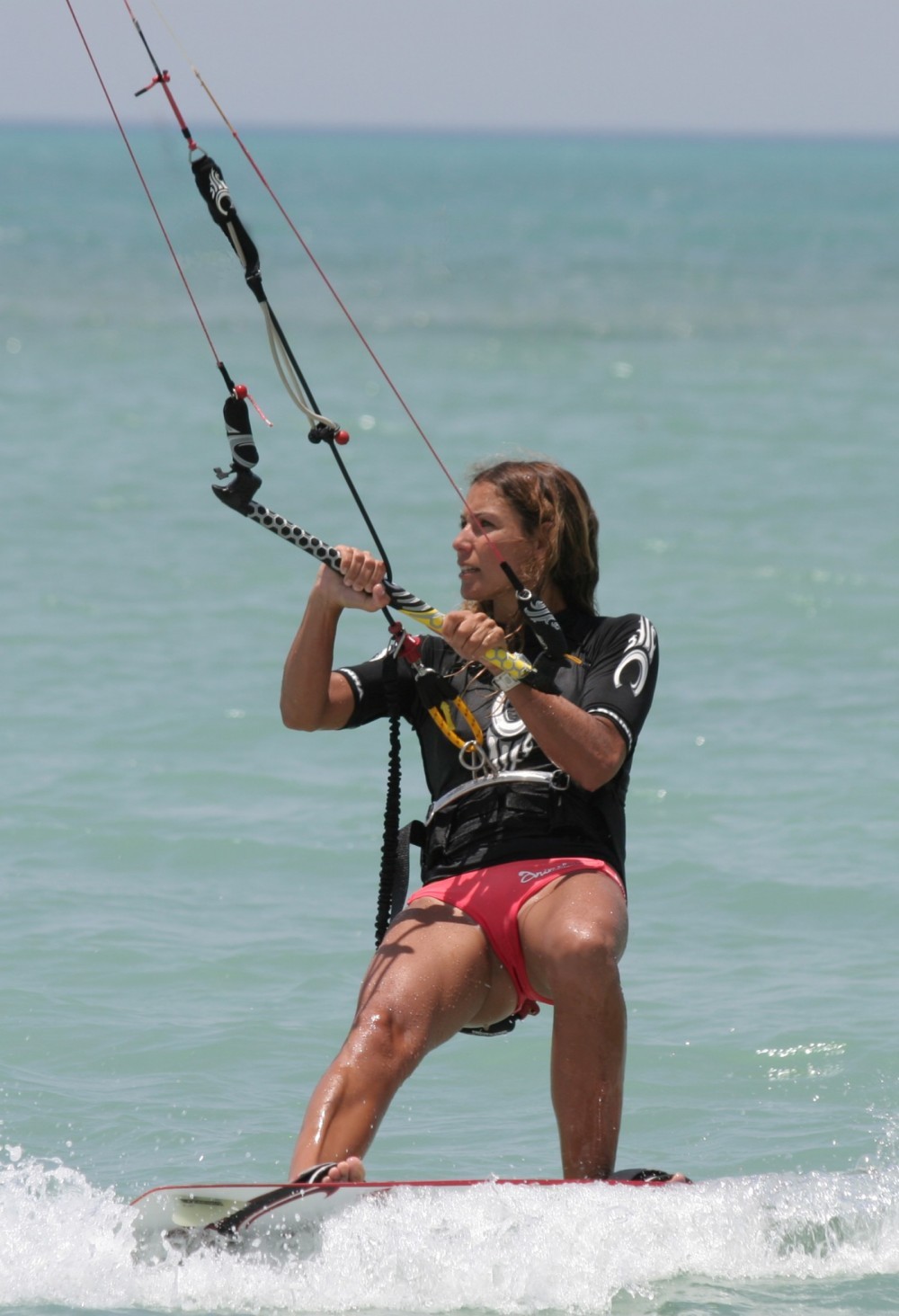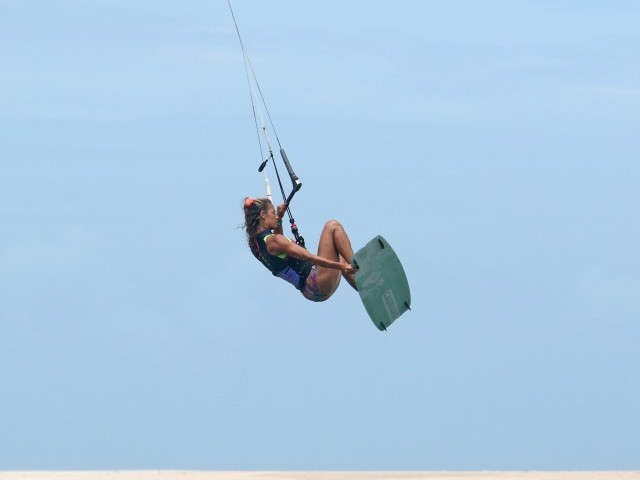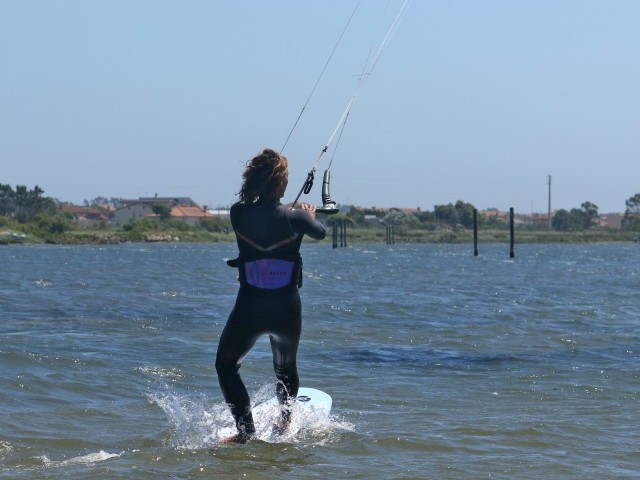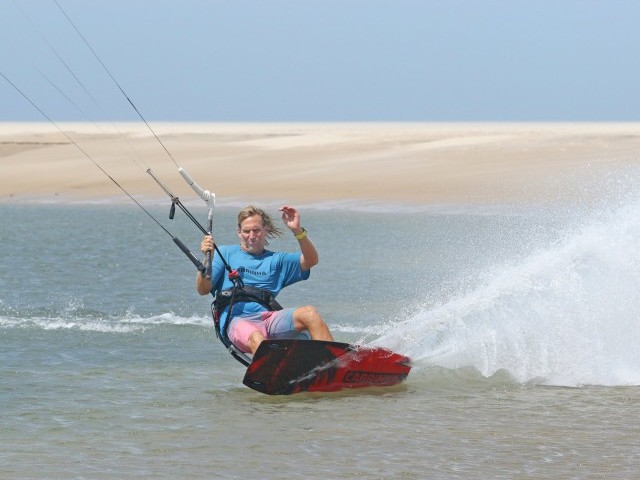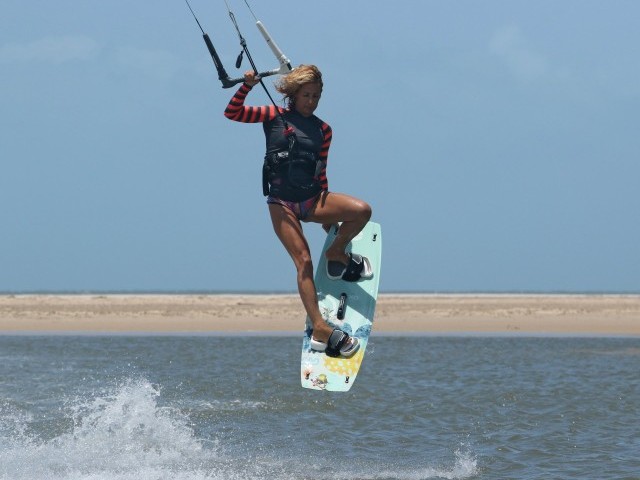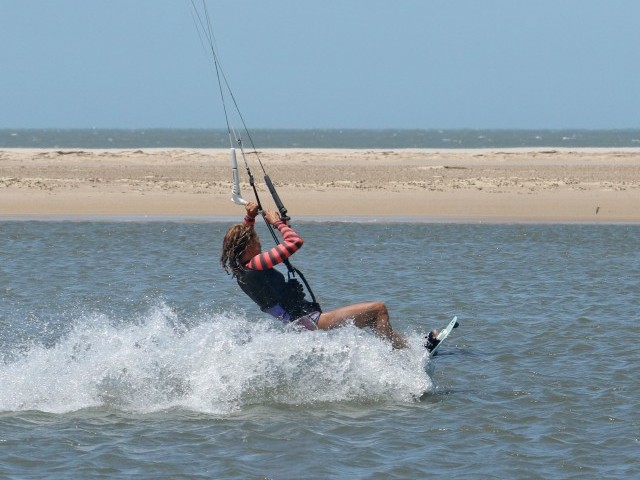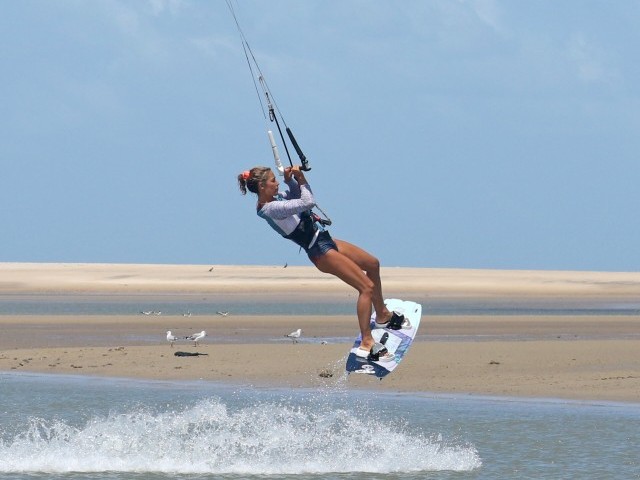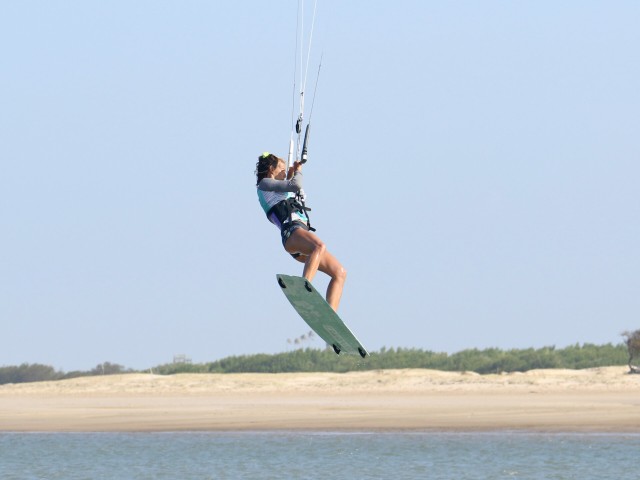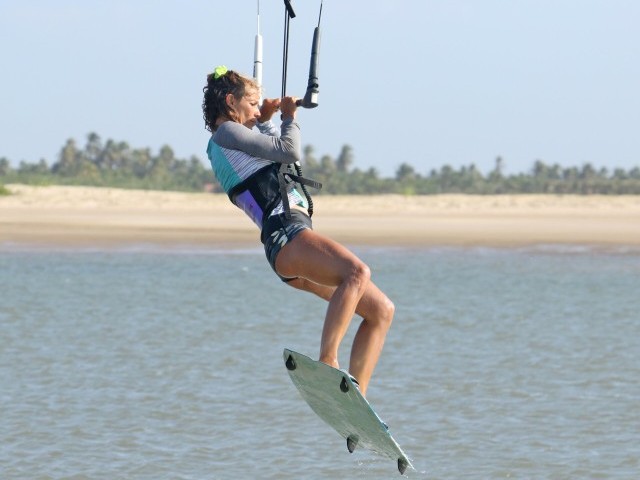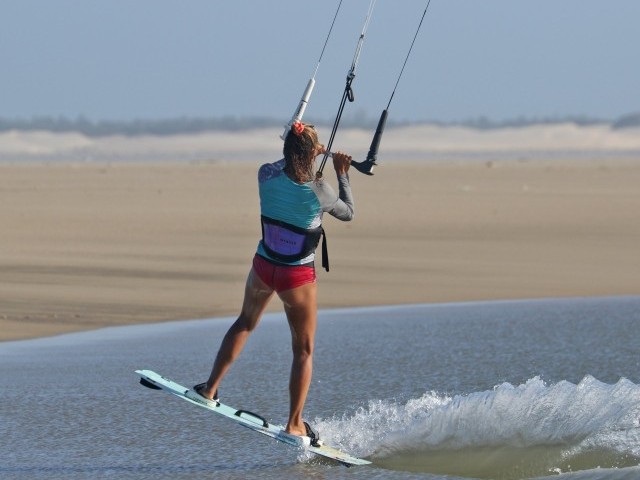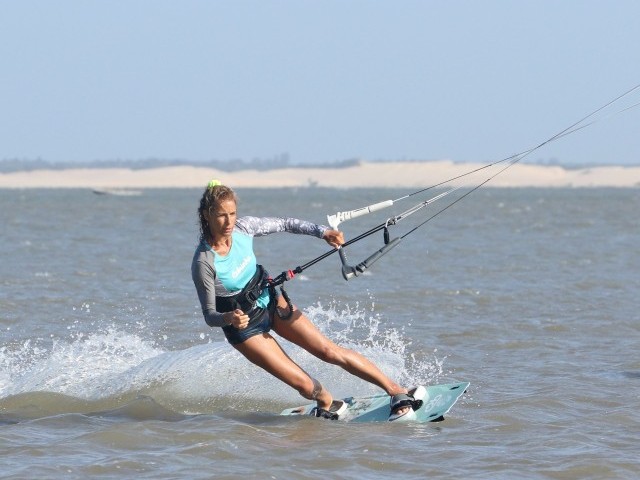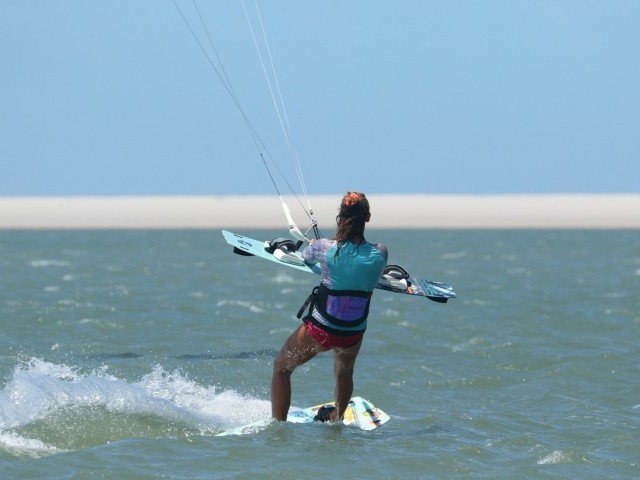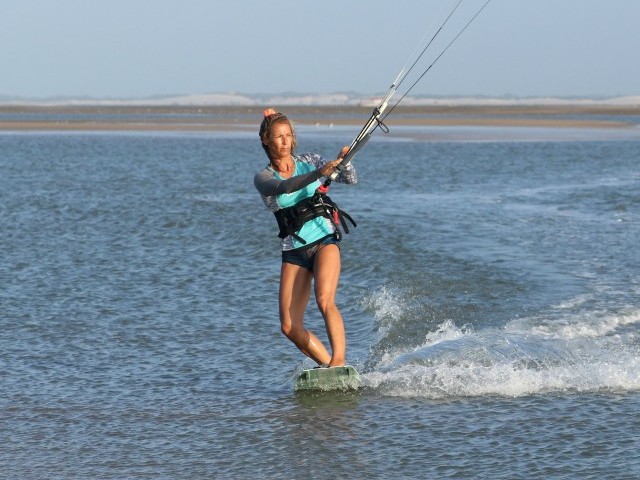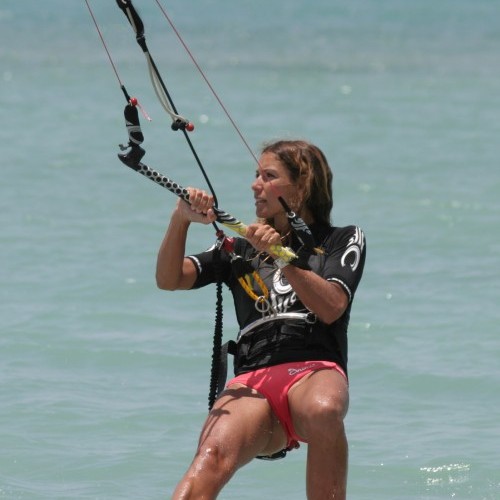
Under Turns
Technique / Beginner
Introduction
Once you have giggled yourself senseless riding across the grand bleu, you know that the once unsure world of kitesurfing is in fact your true calling. With that knowledge comes the endless quest for hacking upwind, mastering your “bad side” and a bevy of pointless, yet none the less handsome moves. In your pursuit of these dreams you may often find yourself in conditions somewhat too light to thoroughly enjoy: enter the under turn, the perfect antidote to summer breezes. Achievable to any rider who can happily water start, and a head turner and personal fluffer, which will stay with you throughout your chosen career, even when the autumnal winds eventually blast through. Here we’ll have a look at marrying the under turn to a water start and then a slide turn.
Tempted?
So what the devil is an under turn? In its simplest form an under turn is a method of turning a forward moving kite 180. Under most normal circumstances you will probably have learnt to turn your kite by steering it upwards and then back across the window. In the case of an under turn you would steer the kite downwards and then back across the window. In Video 1 you can see Karine under turning her kite whilst sliding through a turn.
Big Deal
Now the obvious and seemingly alarming cons of under turning should be addressed before we continue.
On turning the kite downwards, you have set its path for the water. In fact this is only true if you stop pulling on the bar, much like a normal upward turn, the only difference being that if you stop turning the kite upwards you loose power, stop turning it downwards it gets wet. In fact the sin of all sins is usually the result of watching the kite, seeing it head down for a split millisecond, deciding that it’s a terrible idea and stopping pulling.
On turning the kite downwards you are potentially putting it through more power. All modern kites will pretty much turn on a penny, therefore avoiding any scud-esque launches. Add to this the fact that if you go with the pull and don’t resist the potential power, it may well be smooth and delightful as opposed to bad and rad. And in all fairness, we are not suggesting that you go and try this for the first time when your kite feels solidly powered.
Kite Manners
A few basic principles apply to the way your kite will behave.
Firstly to get your kite turning as quick as milk in the mid day sun, you’ll need to move your steering hand towards the end of the bar (Pic A). This will give you more leverage and will also remind you of which hand should be doing the pulling. Also you will need to keep tension in the back lines. If you let the bar out too much, the kite will be slow to turn.
Secondly give yourself room. If you position the kite high before you start, it will turn higher and therefore with less power, or at very least have space to complete the turn should you be a tad gentle. Start low and you’ll have to pull like crazy to get it around without catching the water and you’ll be sure for a bit of extra oomph too.
Thirdly, as your kite turns underneath itself you will not be able to follow it with the bar, as you would do for an upward turn. This means that your lines will end up twisted and you may well end up confused. Your kite will fly happily with the lines twisted, so do not be tempted into untwisting your bar as the kite turns. Rather leave the bar as it is and keep both hands firmly in place.
If you understand these nuggets, then even the most sluggish, large tractor of an 18m will cruise comfortably round without presenting you with any hiccups.
La Resistance
To edge, or not to edge? Resisting is not always a good thing. Whether you are trying an under turn water start, turn or carve, going with the flow and the necessary timing of when to stop resisting is the key. If you offer no resistance too early the kite will refuse to turn. However edge against the full power of the kite at your peril. So how do you it?
Old Under turn Proverb
Before trying any type of under turn you’ll need to be sure of space, both for your benefit and those around you. In the worse case scenario you may execute a low swinging arc of the kite, with the lines scything across the surface of the water (or beach) taking out anyone and everything in a 30m downwind radius as you get pulled after it. So make sure you have oodles of free water room downwind of you.
The Water Start Under Turn
The under turn water start is a formidable way to harness some extra gusto when the breeze is lacking. Easily learnt in marginal conditions, but equally at home when it’s blowing. The basic idea is to perform your usual water start but instead of taking the kite across in front of you from left to right or visa versa, you will pull bloody hard on the backhand and under turn the kite. It will still pull you up as it comes across in front of you, but it’ll feel even better and look sweet too. In Video 2 you can see how the bar stays in a similar position throughout the water start, and Karine makes no effort to untwist her lines until she is happily riding away.
Following Sequence 1
- Pic 1. Karine has started with her kite above her at 12 o’clock. Having checked that the coast is clear she adopts her usual water start position: board across the wind, knees bent up towards her chest and body centred between her feet. She now pulls hard with her back (left) hand to start the under turn.
- Pic 2. She watches the kite and makes sure that it’s started to turn, keeping her back elbow pinned into her waist.
- Pic 3. As Karine feels the kite start to pull she moves her hips back over her back (left) foot to balance against the pull.
- Pic 4. Looking forward in the direction which she will be going Karine keeps pulling hard on the back of the bar.
- Pic 5. As the kite dives down and round it begins to pull her up onto the board.
- Pic 6. All this time Karine keeps pulling on her backhand. The bar has pretty much stayed in the same place all this time.
- Pic 7. Karine twists her shoulders, following the kite across the window. This enables her to keep the board in between her and the kite, so that she comes up onto her heel side edge, even though the board is pointing slightly off the wind.
- Pic 8. Now up on the board, still pulling on the back hand, but moving forward Karine will feel the power going out of the kite. This is because it’s turned through the power zone and is now climbing up.
- Pic 9. To keep the power Karine has stopped pulling on her backhand and steers the kite as normal, ignoring the twist in the lines. She has also started to push her back leg away from her in order to carve up into the wind and sail away. She has still not untwisted her lines and will wait until she’s fully comfortable before doing so.
The Slide Turn Under Turn
Once you’ve practiced the water start you should be fairly happy with what’s going on with the kite. Some of you may be plunging straight in with the slide turn (after issue No. 1). The secret here is to get the kite quite high, and as soon as you’ve got your weight over the front foot and can slide out the back, pull like crazy on your front hand. Before you get confused (having read about the back hand for the waterstart variation), it’s your front hand because it will become your backhand! In Video 3 note how Karine yanks the bar with her front hand as soon as her foot slides out. And that she once again waits until she is joyously sailing away before untwisting her bar. For a wider view see Video 1.
Following Sequence 2
- Pic 1. After a good butchers Karine has moved her front hand towards the end of the bar, slowly taken her kite up, carved harder upwind, moved her hips over her front foot and started to push the back foot out.
- Pic 2. As soon as the board begins to slide Karine is pulling hard on her left hand.
- Pic 3. With the board pointing off downwind she keeps her weight over her new back (left) foot, ready to counter balance any sudden pull from the kite.
- Pic 4. Pulling with all her might Karine turns her head to follow the kite and keeps her left arm pinned in to her side.
- Pic 5. As the kite comes down and round Karine sits over her back foot and..
- Pic 6. Drops her weight onto her heels, still pulling!
- Pics 7 & 8. Now that she is starting to edge Karine feels more power, and needs to keep pulling to get the kite all the way round.
- Pics 9 & 10. Karine drops her weight low against the power, twisting her shoulders and hips to follow the kite as it moves forwards.
- Pic 11. As she feels the pull decreasing Karine stops pulling on her backhand and steers the kite forwards to maintain power.
- Pic 12. She keeps carving all the way around her turn, so as not to get pulled off downwind, and is settled in her upwind stance before thinking about untwisting her lines.
And Then Some
These two examples of under turns are your ticket to very slick toe-side and heel-side carves. If you’re not sure about the idea of pulling like crazy with one hand, try it in the water without the board. They are also useful in waves when you can’t get enough tension back in the lines to take the kite all the way back over the top, but you can spin it underneath itself. And if all that was not enough, they’ll teach you a great deal about a looping kite and the ensuing madness – brilliant.
This technique article was in Issue 4 of IKSURFMAG.
Related
By Christian and Karine
Christian and Karine have been working together as a coaching team, running improver to advanced kitesurfing clinics since 2003.








